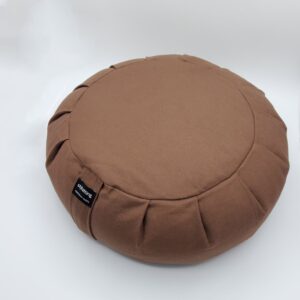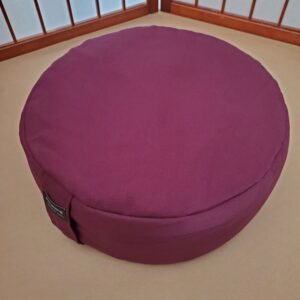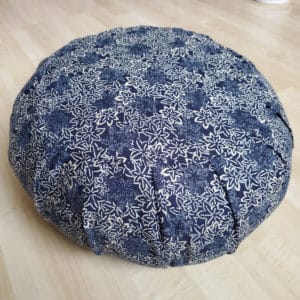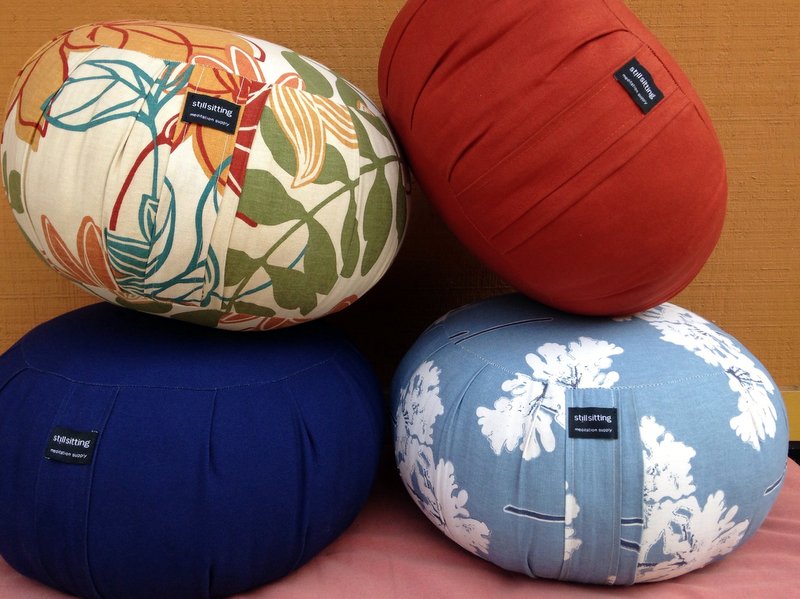
Your zafu is not just a cushion. It is a symbol of your commitment.
So, when we make a zafu, we take it seriously. We craft these cushions carefully, using durable materials that are meant to last. You should have confidence knowing that when you purchase a cushion from Still Sitting, you’re getting a premium product. We want to hear from you in twenty years, saying that you’re still using the same cushion! But, we’re also Buddhists, and we know that impermanence is the rule, not the exception — even for the best zafus out there.
To make the most out of your zafu and extend its lifespan as much as possible, try these basic care tips. If you do, maybe we’ll see you in twenty years.
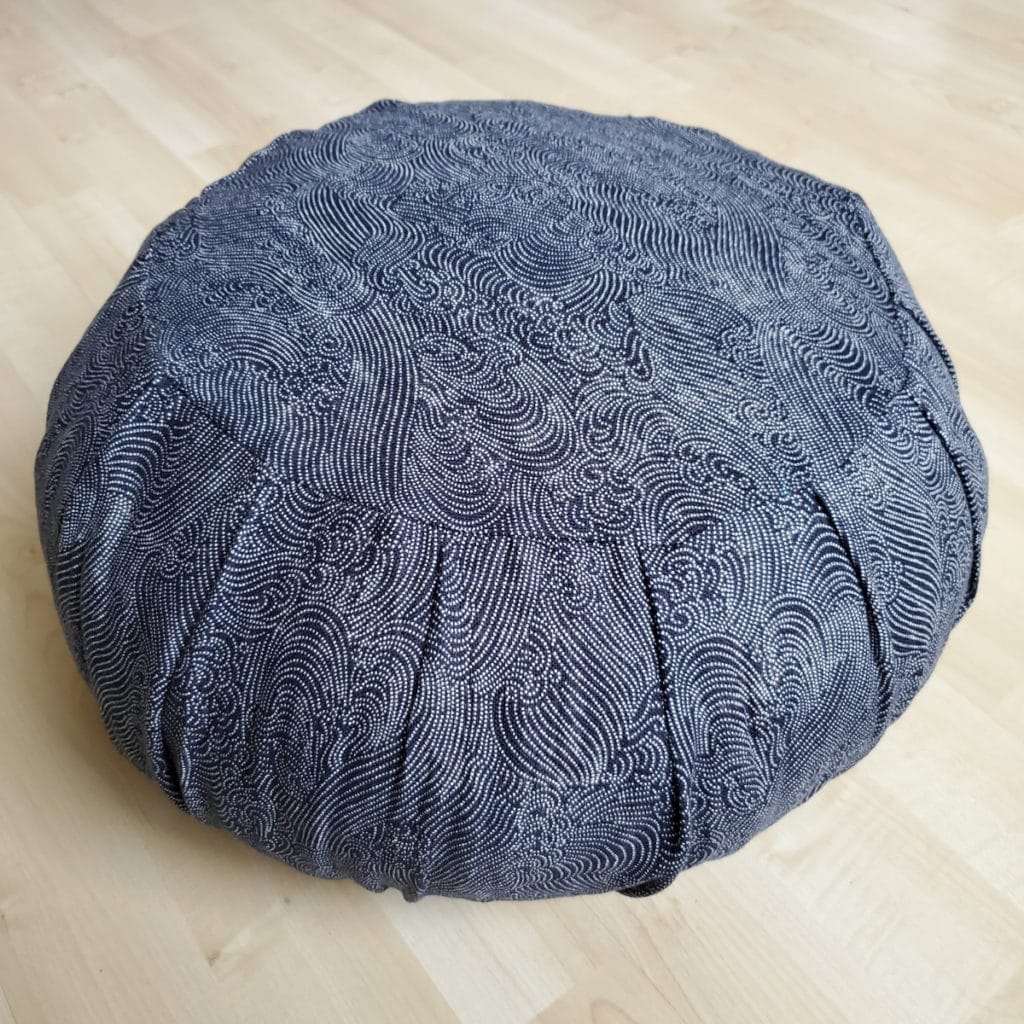
Basic zafu care and maintenance
Proper care for your zafu involves regular cleaning, handling, and storage practices:
1. Regular care
To keep your zafu clean and free of dust, we recommend vacuuming or cleaning it with an upholstery brush regularly. Some zafus can be ordered from Still Sitting with a removable cover, allowing for easy deep cleaning. Just put your zafu cover in with your other laundry. Avoid using harsh chemicals or bleach, as they can damage the fabric and fillings.
2. Spot cleaning
Accidents happen. There’s nothing like a green tea stain on your zafu! Spot clean your cushion as needed, but promptly if you’ve spilled something on it. We recommend using a damp cloth or sponge. You can use a mild soap if needed. Blot excess moisture with a towel and allow the zafu to air dry completely.
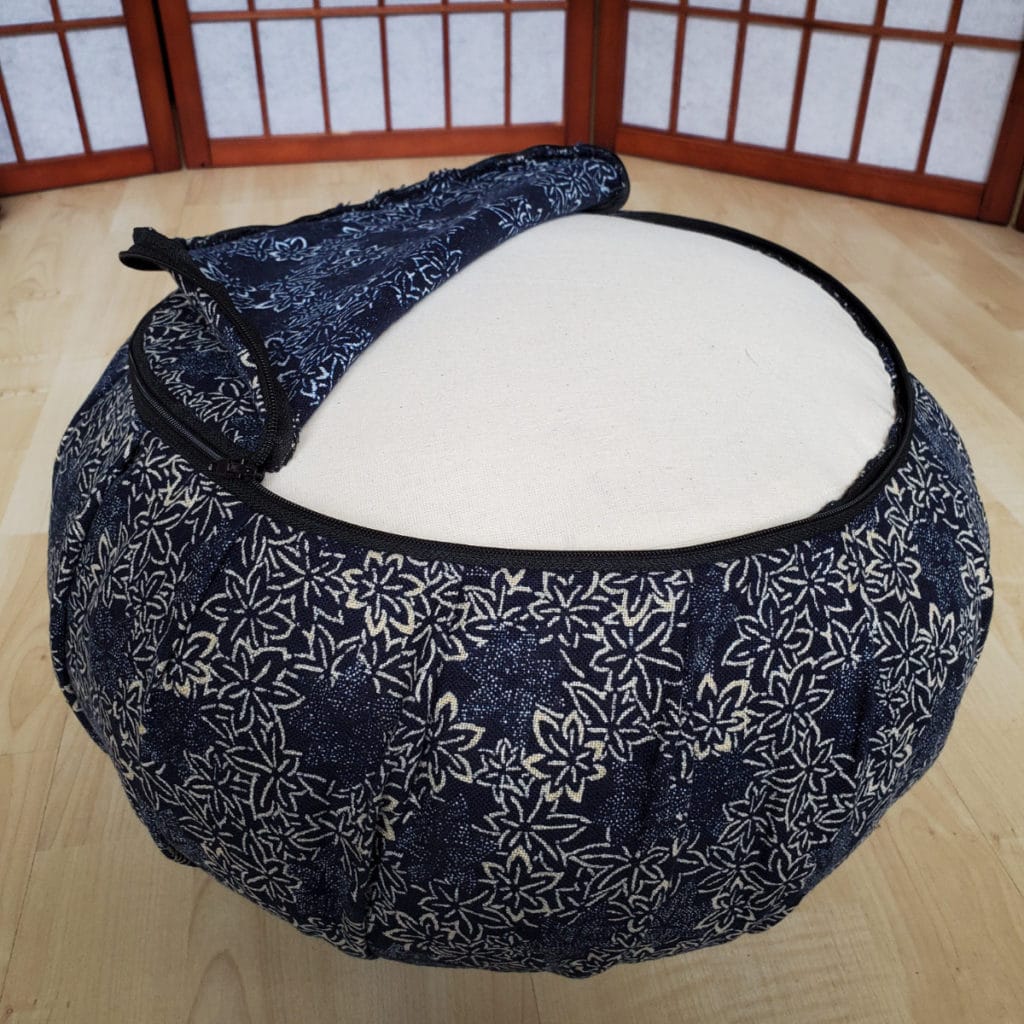
3. Proper handling and storage
If you have a dedicated meditation space, great! But if not, it’s best to avoid keeping your cushion in high-traffic areas where it could get damaged. When not in use, keep it stored safely in a closet or drawer. Keep it in a cool, dry place away from moisture.
4. Rotating and fluffing
To ensure even wear and maintain the shape of your zafu, it’s a good practice to rotate and fluff it regularly. Rotating helps distribute the pressure evenly, preventing one side from becoming flattened over time. Fluffing the zafu involves gently kneading and shaking it to redistribute the fillings, ensuring it remains firm and supportive. Depending on how often you use your zafu, aim to rotate and fluff it at least once a month.
Extending the life of your zafu
In addition to the basic care tips, there are a few extra steps you can take to extend the life of your zafu:
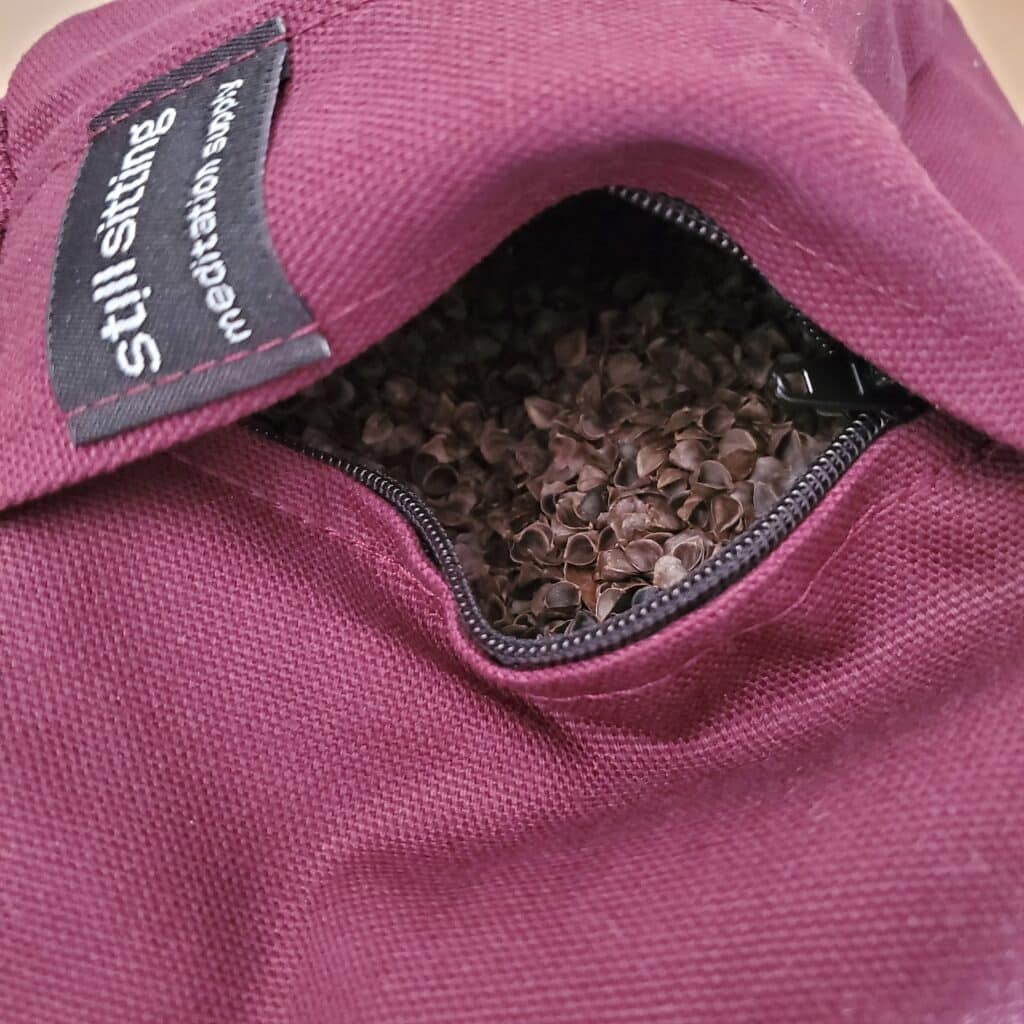
- Refill the stuffing material: Over time, the fillings in your zafu may compress and lose their firmness. If you notice your zafu becoming less supportive, consider adding more buckwheat hulls or kapok to restore its original shape and firmness. Most zafus have a zipper or opening that allows you to easily add or replace the fillings. You can order refills of both kapok and buckwheat directly from Still Sitting.
- Repair minor damages: Small tears or loose seams can be repaired with basic sewing skills. Addressing these issues promptly prevents them from becoming more significant problems that could compromise the integrity of the zafu.
- Use a protective cover: If your zafu does not come with a removable cover, consider purchasing or making one. A cover can protect the fabric from dirt, stains, and wear, making it easier to keep your zafu clean and in good condition.
If you have any questions about caring for your zafu, we encourage you to reach out to us directly by email or through our Facebook page!
Happy sitting.
Learn more from Still Sitting: “Choosing the right zafu.”
-
Product on saleMedium Brown Zafu
$67.00$49.00 -
Product on saleBurgundy Button Zafu
$67.00$47.00 -
Kyoto Collection Zafus$108.00

